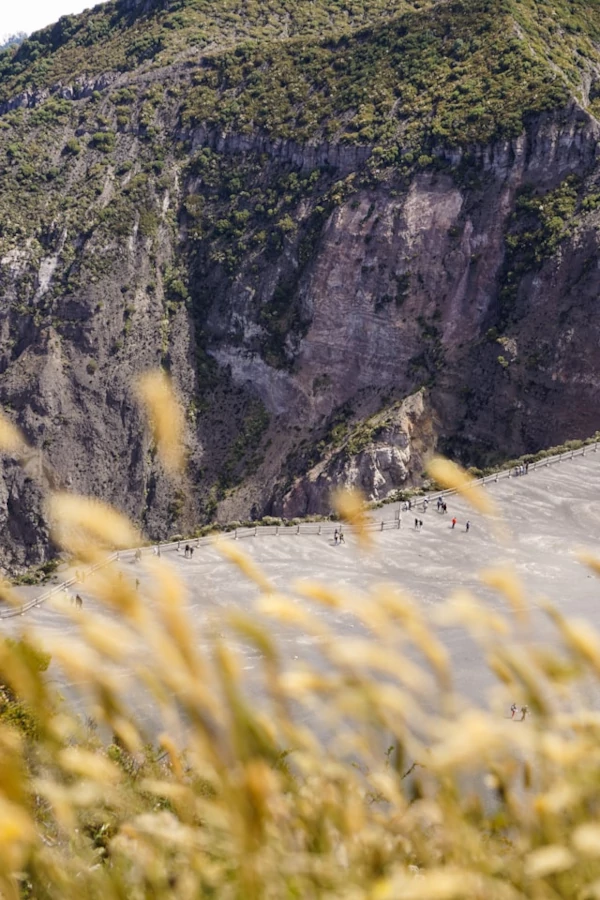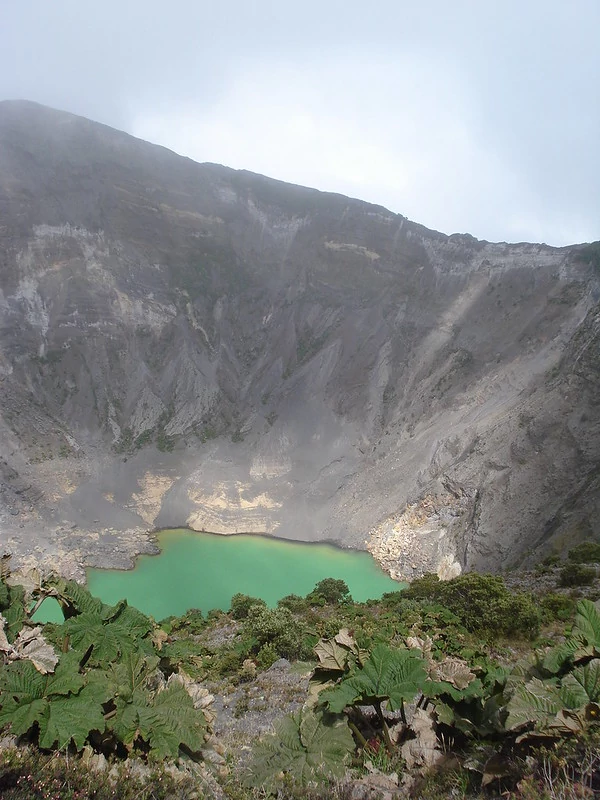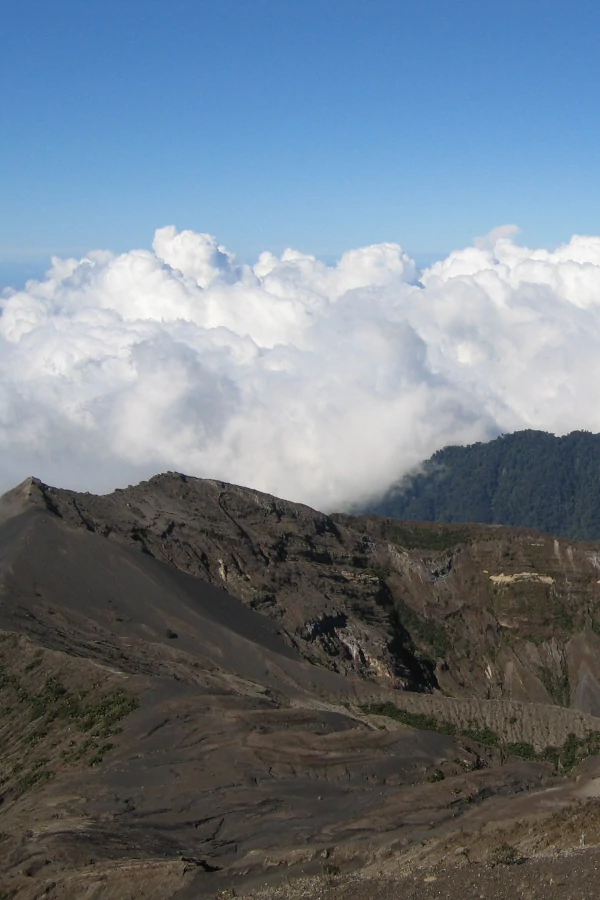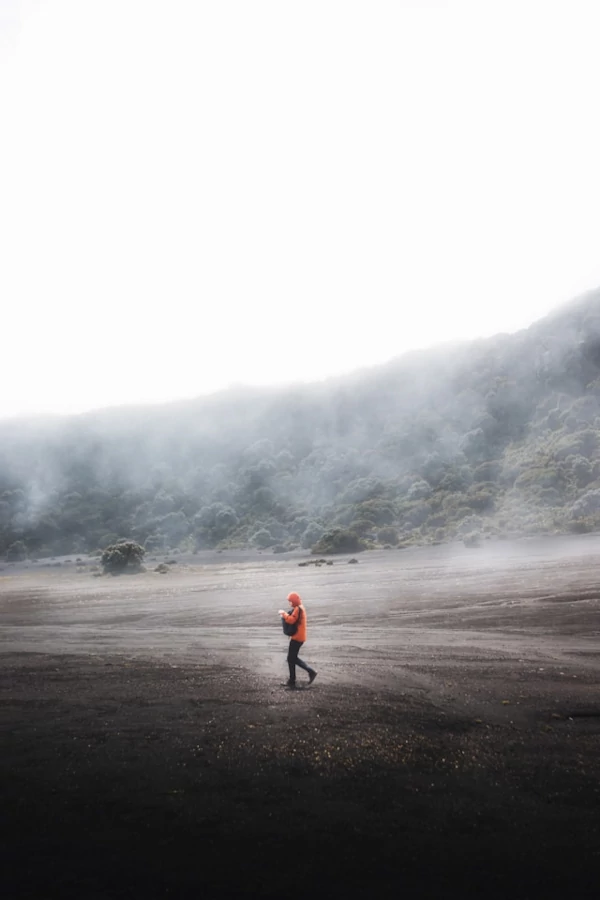With its dramatic craters, lunar-like landscapes, and breathtaking views, Irazú is a must-visit destination for anyone exploring Costa Rica’s Central Valley. Whether you’re hiking to the summit, marveling at the turquoise-green crater lake, or soaking in panoramic views of both the Pacific and Caribbean coasts, Irazú promises an unforgettable adventure for nature lovers and adventure seekers alike.
Irazú Volcano National Park: Costa Rica’s Towering Giant
Discover Irazú Volcano National Park
Irazú Volcano National Park is home to Costa Rica’s tallest and most iconic volcano, a towering giant that offers visitors a chance to experience the raw power and beauty of nature. Known for its dramatic craters, lunar-like landscapes, and breathtaking views, Irazú is a must-visit destination for anyone exploring Costa Rica’s Central Valley. Whether you’re a geology enthusiast, a nature lover, or simply seeking adventure, Irazú will leave you in awe.
About the Park
Irazú Volcano National Park is centered around the 11,260-foot (3,432-meter) Irazú Volcano, one of Costa Rica’s most active and historically significant volcanoes. The park’s otherworldly terrain features steaming craters, volcanic ash fields, and rugged high-altitude ecosystems, making it a unique destination for visitors.
The volcano’s name, “Irazú,” comes from the indigenous Cabécar language and means “thunder mountain”, a fitting name for this powerful natural wonder. Today, the park is a popular spot for hiking, sightseeing, and photography, offering a glimpse into the forces that shape our planet.
Location and How to Get There
Irazú Volcano National Park is conveniently located just 30 miles (50 km) from San José, making it an easy day trip from the capital. The drive takes about 1.5 hours and offers stunning views of the Central Valley and surrounding mountains.
- By Car: The most flexible option, allowing you to explore at your own pace. The road to the summit is well-maintained but can be steep and winding.
- Guided Tours: Many tour operators offer day trips from San José, which often include transportation, a guide, and stops at nearby attractions.
History and Eruptions
Irazú Volcano has a long history of activity, with its most famous eruption occurring in 1963. This eruption coincided with President John F. Kennedy’s visit to Costa Rica and blanketed San José in ash, earning Irazú the nickname “El Coloso” (The Colossus).
- Recent Activity: While Irazú is currently dormant, it remains one of Costa Rica’s most closely monitored volcanoes.
- Cultural Significance: The volcano has played a significant role in Costa Rican history and culture, inspiring legends and scientific study alike.
Natural Wonders of Irazú
Irazú Volcano National Park is a place of stark beauty and geological marvels, offering visitors a chance to explore some of Costa Rica’s most unique landscapes. From its towering craters to its high-altitude ecosystems, the park is a treasure trove of natural wonders. Whether you’re a geology enthusiast, a photographer, or simply someone who loves being in nature, Irazú will leave you spellbound.
The Main Crater
The main crater is the star attraction of Irazú Volcano National Park. This massive, bowl-shaped depression was filled with a turquoise-green lake, whose color changed depending on the minerals and sunlight, but in 2020 the lake went completely dry. On clear days, the crater’s steam vents add an otherworldly touch to the scene, making it a favorite spot for photographers.
- Unique Feature: The ash-covered slopes create a lunar-like landscape that feels almost alien.
- Best Time to Visit: Early mornings are ideal for clear views and fewer crowds.
Diego de la Haya Crater
The Diego de la Haya Crater is a smaller but equally fascinating feature of Irazú. This crater is dry and filled with volcanic ash and rock formations.
- Geological Interest: This crater is a great place to learn about the volcano’s history and the forces that shaped it.
- Accessibility: It’s easily accessible via the park’s main trail, making it a must-see for all visitors.
Flora and Fauna
Despite its harsh, high-altitude environment, Irazú is home to a variety of hardy plants and wildlife that have adapted to the volcanic terrain.
- Flora: Look for mosses, shrubs, and low-growing plants that thrive in the nutrient-rich volcanic soil.
- Fauna: The park is a haven for high-altitude birds like the sooty robin and volcano hummingbird, as well as small mammals like rabbits and coyotes.
Panoramic Views from the Summit
One of the most breathtaking experiences at Irazú is standing at the summit and taking in the panoramic views. On clear days, you can see both the Pacific Ocean and the Caribbean Sea, as well as the sprawling Central Valley below.
- Best Time for Views: Visit during the dry season (December to April) for the clearest skies.
- Photography Tip: Bring a wide-angle lens to capture the vastness of the landscape.
Things to Do in Irazú Volcano National Park
Irazú Volcano National Park offers a mix of adventure, natural beauty, and geological wonder, making it a must-visit destination for anyone exploring Costa Rica. Whether you’re hiking to the summit, marveling at the craters, or soaking in panoramic views, there’s something for everyone. Here are the top activities to add to your Irazú itinerary:
Hiking the Trails
The park features a short, paved trail that leads to the main crater and Diego de la Haya Crater, making it accessible for visitors of all fitness levels. The hike is easy but rewarding, offering stunning views of the volcanic landscape and surrounding valleys. There are also numerous other trails on the lower Prusia sector, perfect for runners and hikers.
- What to Expect: The main trail is well-maintained and takes about 30 minutes round trip, with plenty of opportunities to stop and take photos.
- Pro Tip: Wear sturdy shoes and bring a light jacket, as the high-altitude weather can be chilly and windy.
Exploring the Craters
The main crater and Diego de la Haya Crater are the park’s star attractions. The main crater’s steam vents create an otherworldly atmosphere, while the dry, ash-filled Diego de la Haya Crater offers a stark contrast.
- Photography Opportunities: Both craters are perfect for capturing dramatic landscapes and unique geological features.
- Educational Value: Learn about the volcano’s history and the forces that shaped its craters through interpretive signs along the trail.
Enjoying the Panoramic Views
One of the highlights of visiting Irazú is the breathtaking views from the summit. On clear days, you can see both the Pacific Ocean and the Caribbean Sea, as well as the Central Valley below.
- Best Time for Views: Visit during the dry season (December to April) for the clearest skies.
- Photography Tip: Bring a wide-angle lens to capture the vastness of the landscape.
Birdwatching and Wildlife Spotting
Despite its harsh environment, Irazú is home to a variety of high-altitude birds and wildlife that have adapted to the volcanic terrain.
- Birdwatching: Look for species like the sooty robin and volcano hummingbird, which are unique to high-altitude ecosystems.
- Wildlife: Keep an eye out for small mammals like rabbits and coyotes, as well as hardy plants that thrive in the volcanic soil.
Relaxing and Taking It All In
Sometimes, the best thing to do at Irazú is simply slow down and enjoy the beauty of nature. Find a quiet spot near the craters or along the trail to soak in the sights and sounds of this unique environment.
- Picnic Areas: Pack a lunch and enjoy a picnic with stunning views of the volcanic landscape.
- Mindful Moments: Take a moment to appreciate the raw power and beauty of one of Costa Rica’s most iconic volcanoes.
Visitor tips
Planning a visit to Irazú Volcano National Park? Here’s everything you need to know to make the most of your trip. From the best time to visit to what to pack, these tips will help you prepare for an unforgettable adventure at Costa Rica’s tallest volcano.
Best Time to Visit
The dry season (December to April) is the ideal time to visit Irazú Volcano National Park. During these months, you’ll enjoy clear skies and stunning views of the craters and surrounding landscapes.
- Rainy Season (May to November): While you might encounter afternoon showers, the park is less crowded, and the lush greenery adds to its beauty.
- Early Mornings: Arrive early to avoid clouds that often roll in by midday, especially during the rainy season.
Entrance Fees and Opening Hours
Irazú Volcano National Park is affordable and easy to access, making it a great option for travelers on a budget.
- Entrance Fee: $16.95 for foreign adults $5.65 for foreign children. ¢1130 for resident adults ¢565 for resident children.
- Opening Hours: The park is open from 8:00 AM to 4:00 PM daily, but it’s best to arrive early to make the most of your visit.
- Guided Tours: Hiring a local guide is a great way to learn more about the park’s geology and history. Guides are available at the park entrance.
What to Pack
Packing the right gear can make your visit to Irazú much more enjoyable. Here’s a quick checklist:
- Layered Clothing: The high-altitude weather can be chilly and windy, so bring a light jacket or sweater.
- Sturdy Shoes: The trails are well-maintained but can be uneven, so wear comfortable hiking shoes.
- Sunscreen and Hat: The sun can be intense at high elevations, even on cloudy days.
- Water and Snacks: Stay hydrated and energized during your visit.
- Camera and Binoculars: Capture the stunning views and spot high-altitude birds.
Safety Tips
Irazú Volcano National Park is a safe destination, but it’s always good to be prepared. Here are a few tips to keep in mind:
- Stay on Marked Trails: This protects the environment and keeps you safe from unstable terrain.
- Respect the Craters: Avoid getting too close to the edges of the craters, as the ground can be unstable.
- Be Prepared for Weather Changes: The high-altitude weather can change quickly, so bring layers and rain gear.
- Leave No Trace: Pack out all your trash and avoid disturbing the natural environment.
Nearby Attractions and Accommodations
If you have extra time, consider exploring the surrounding area. The nearby town of Cartago is a great place to learn about Costa Rica’s history and culture.
- Where to Stay: From budget-friendly hostels to luxury lodges, there are plenty of options to suit every budget.
- Other Activities: Visit the Basilica of Our Lady of the Angels in Cartago or take a day trip to Orosi Valley for more adventure.







